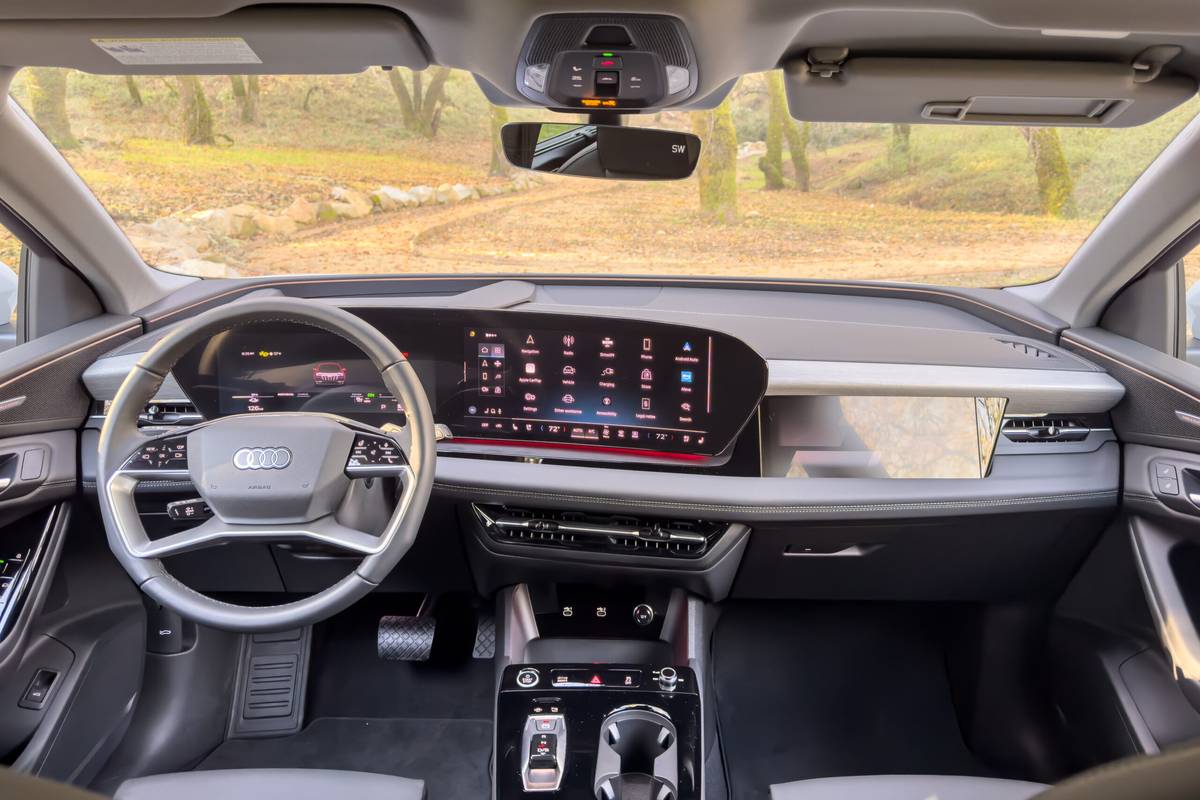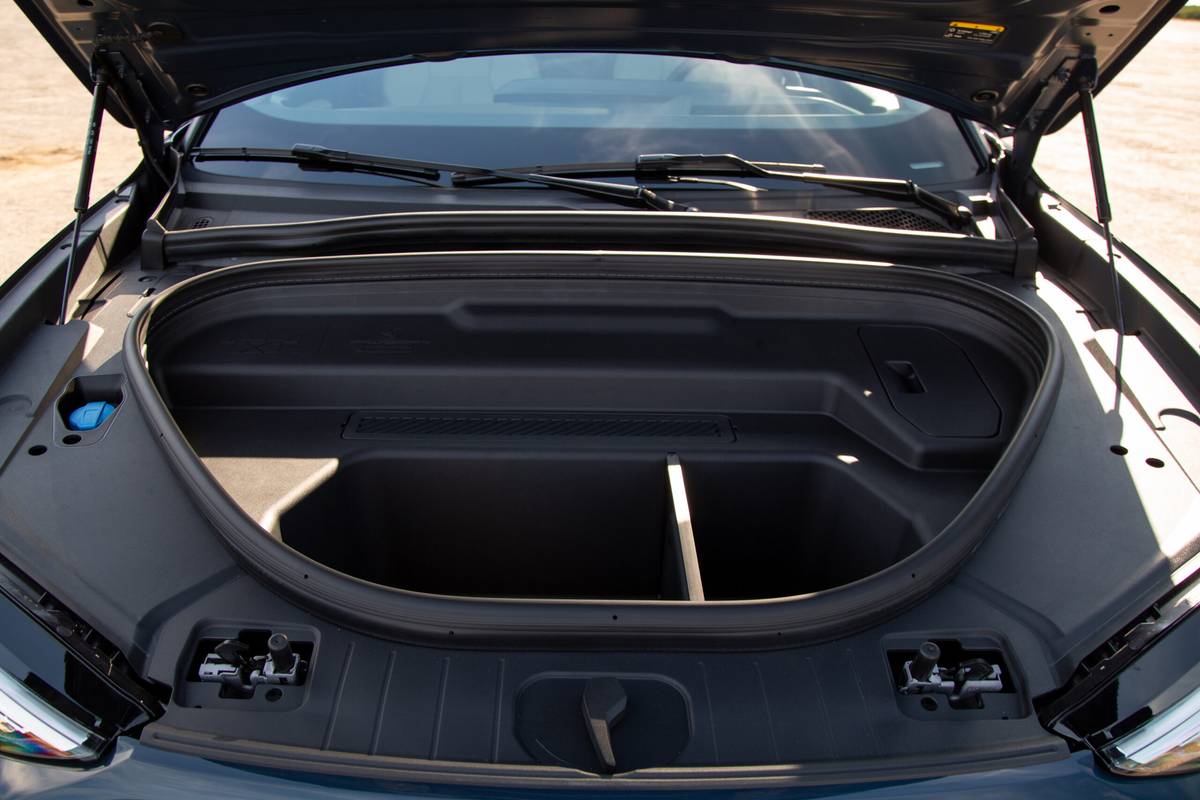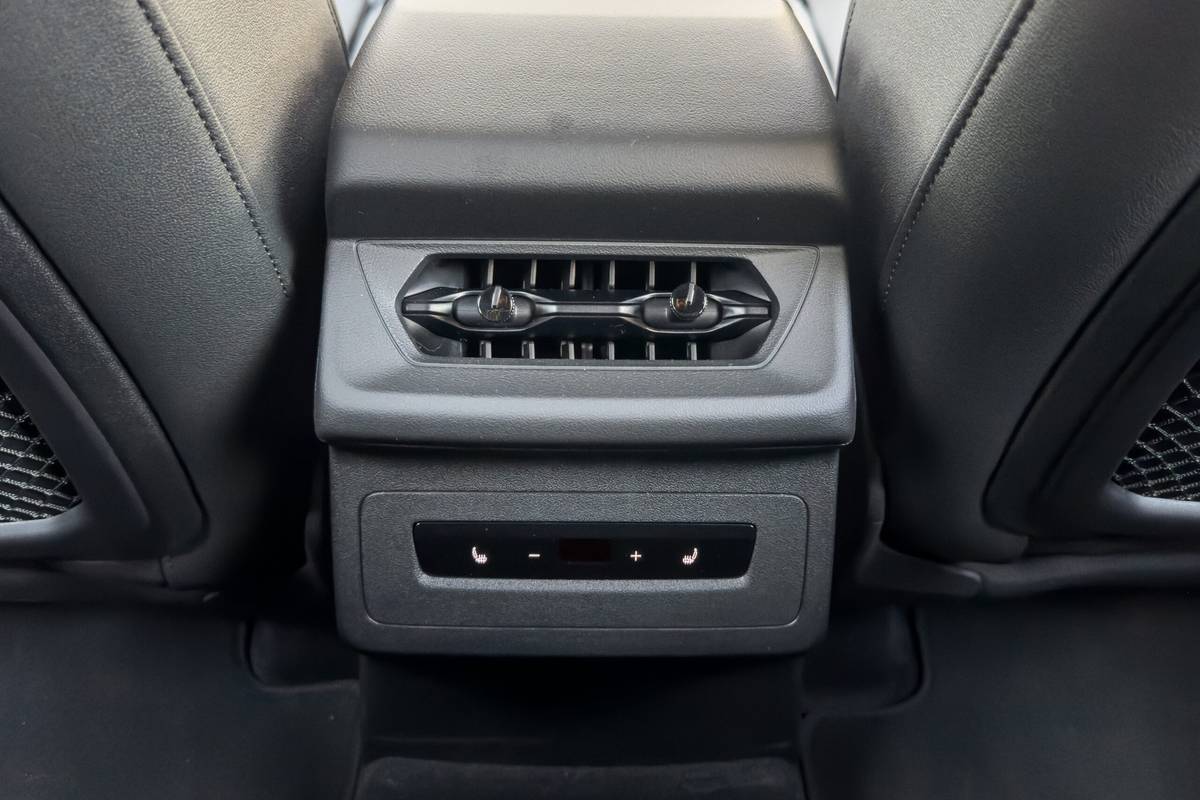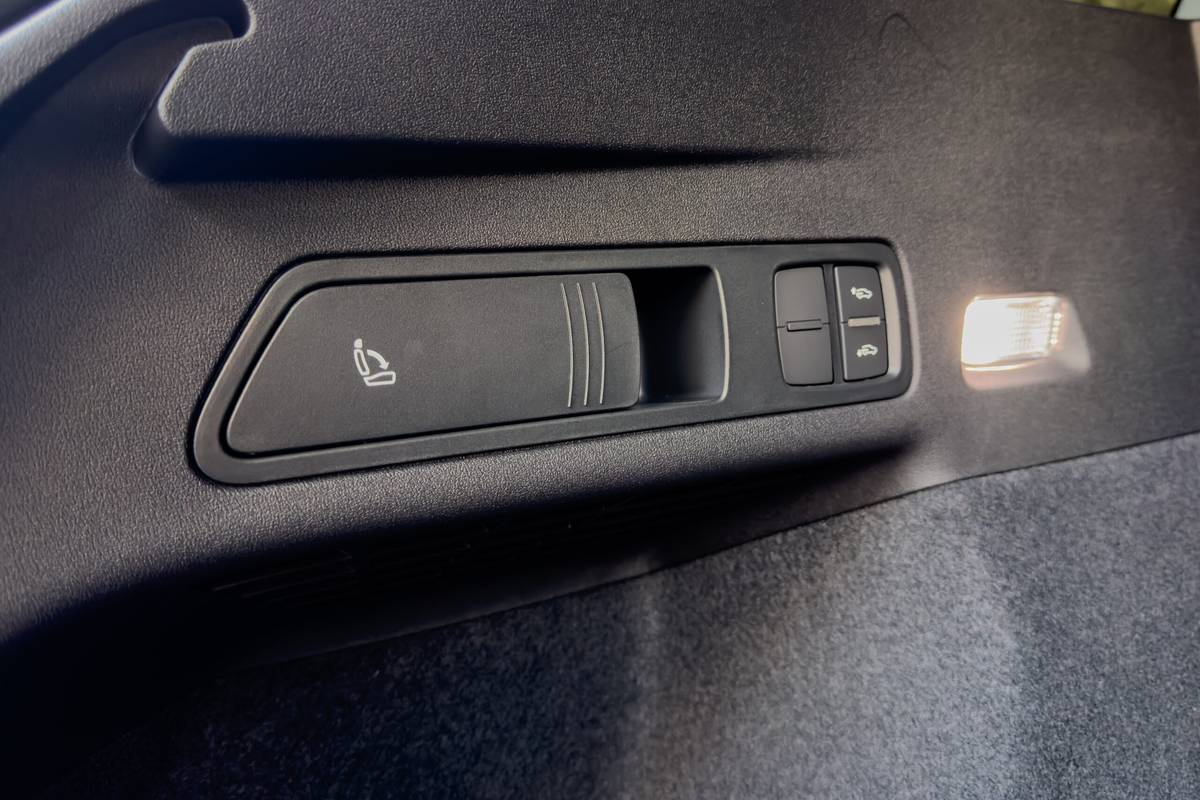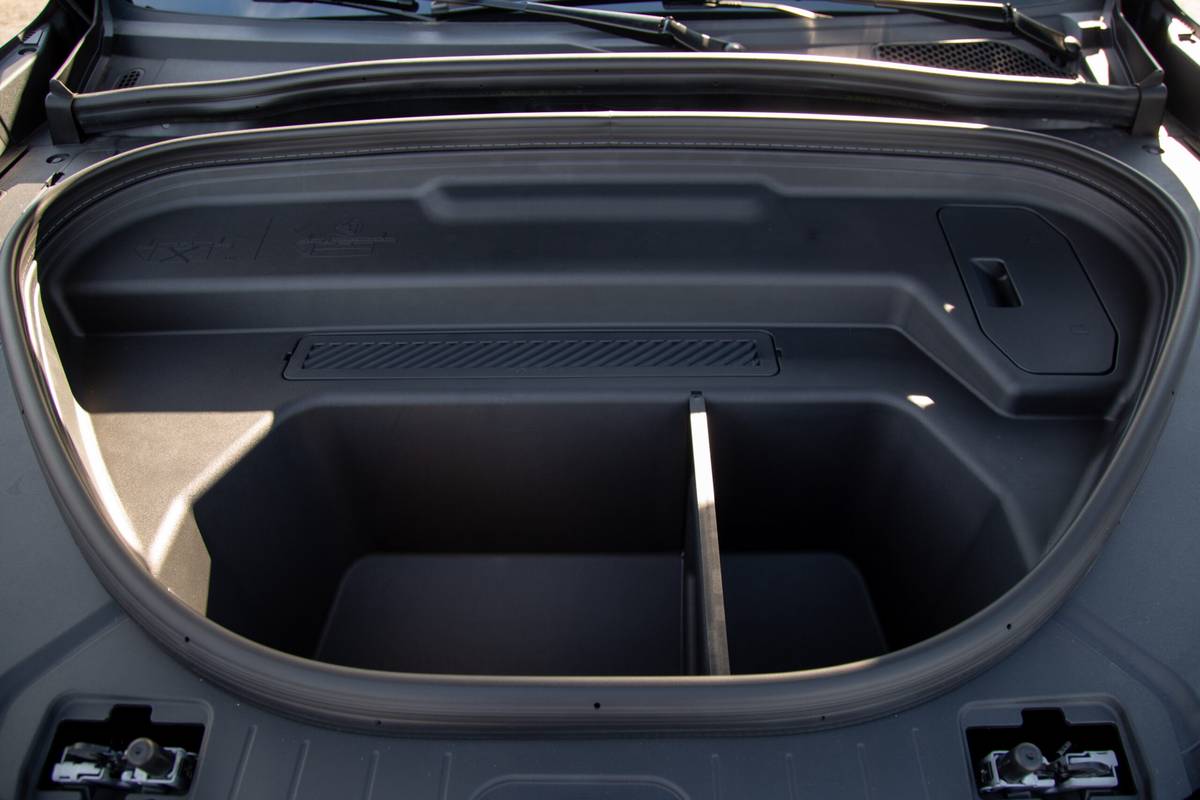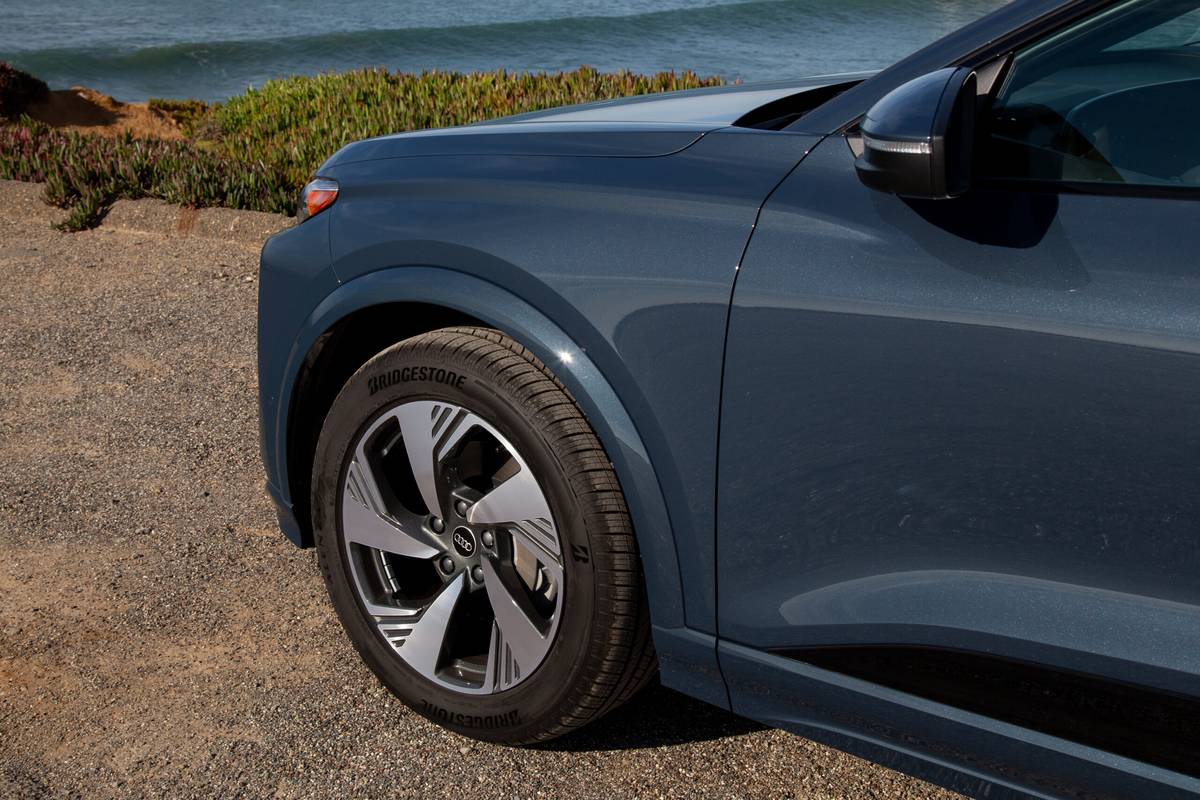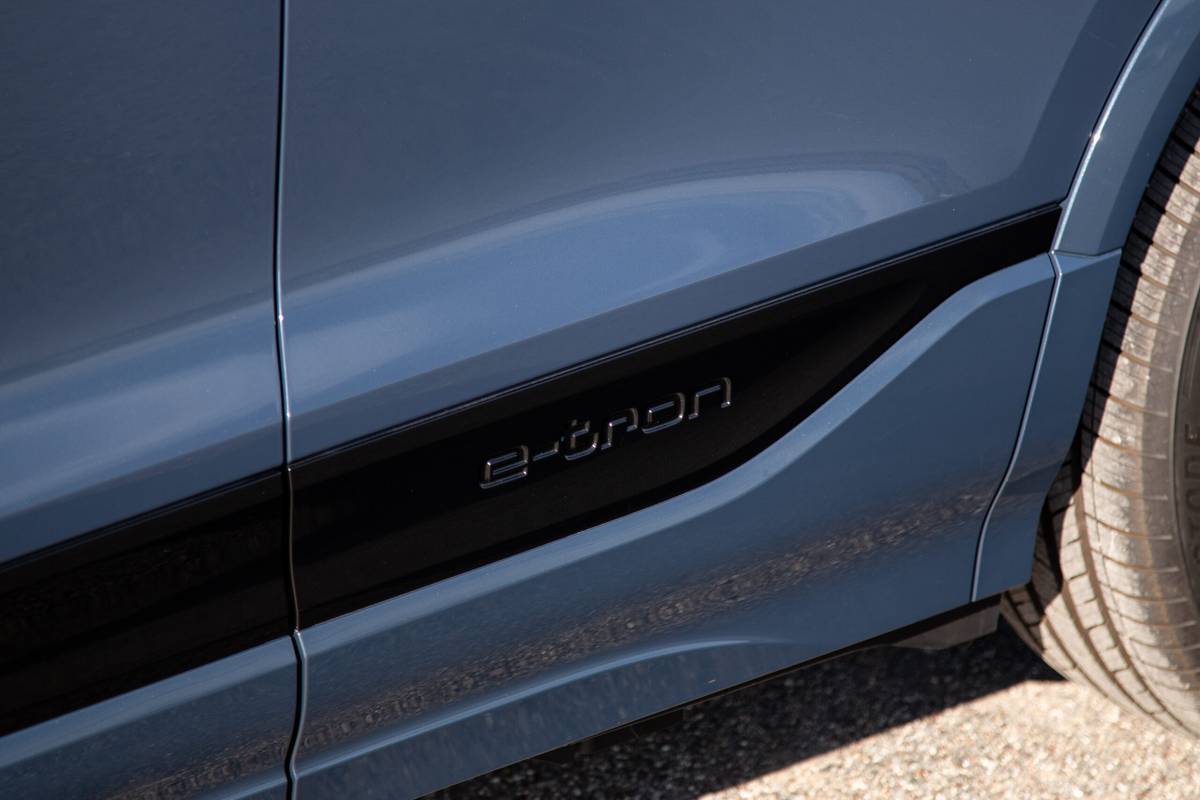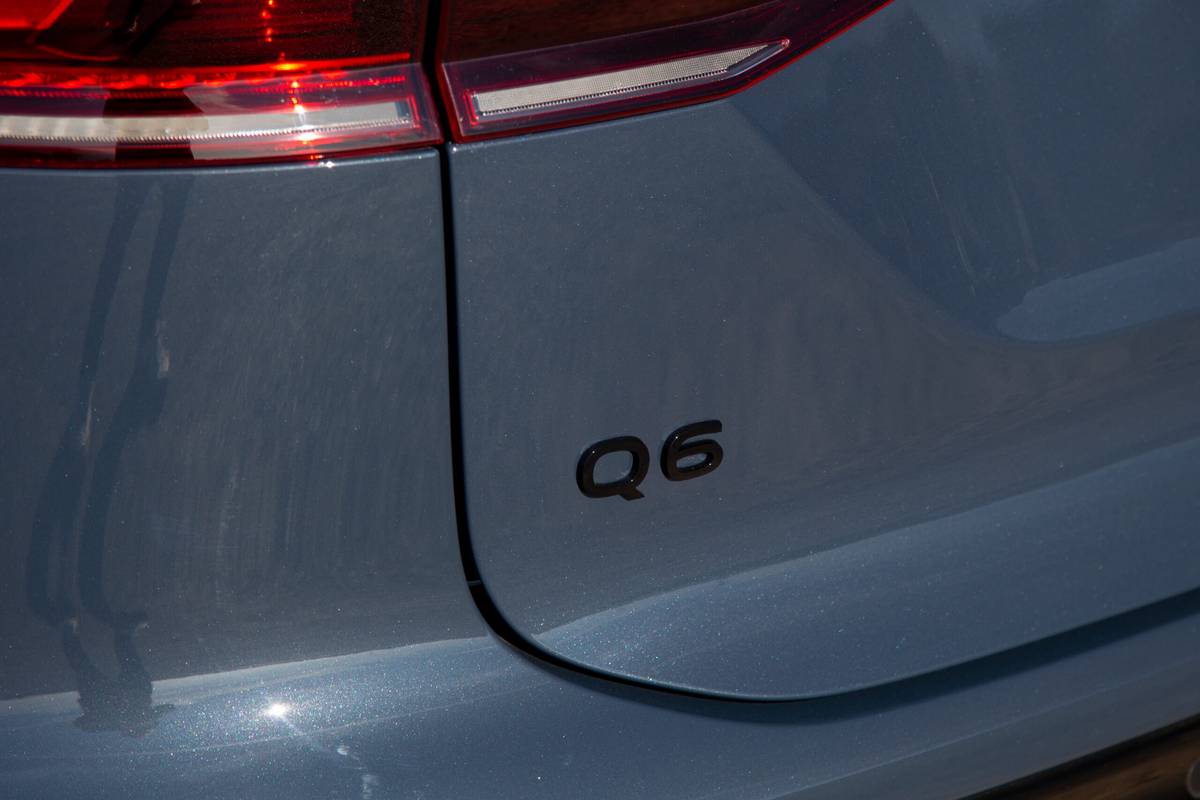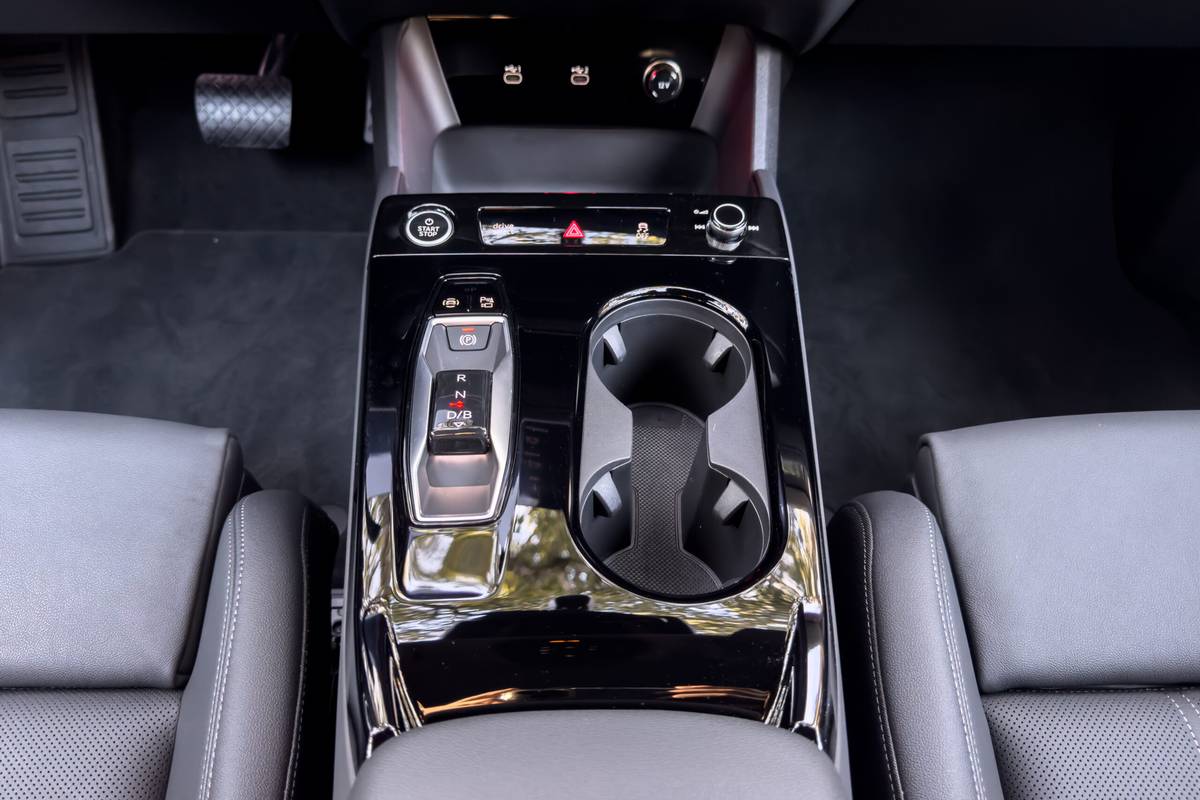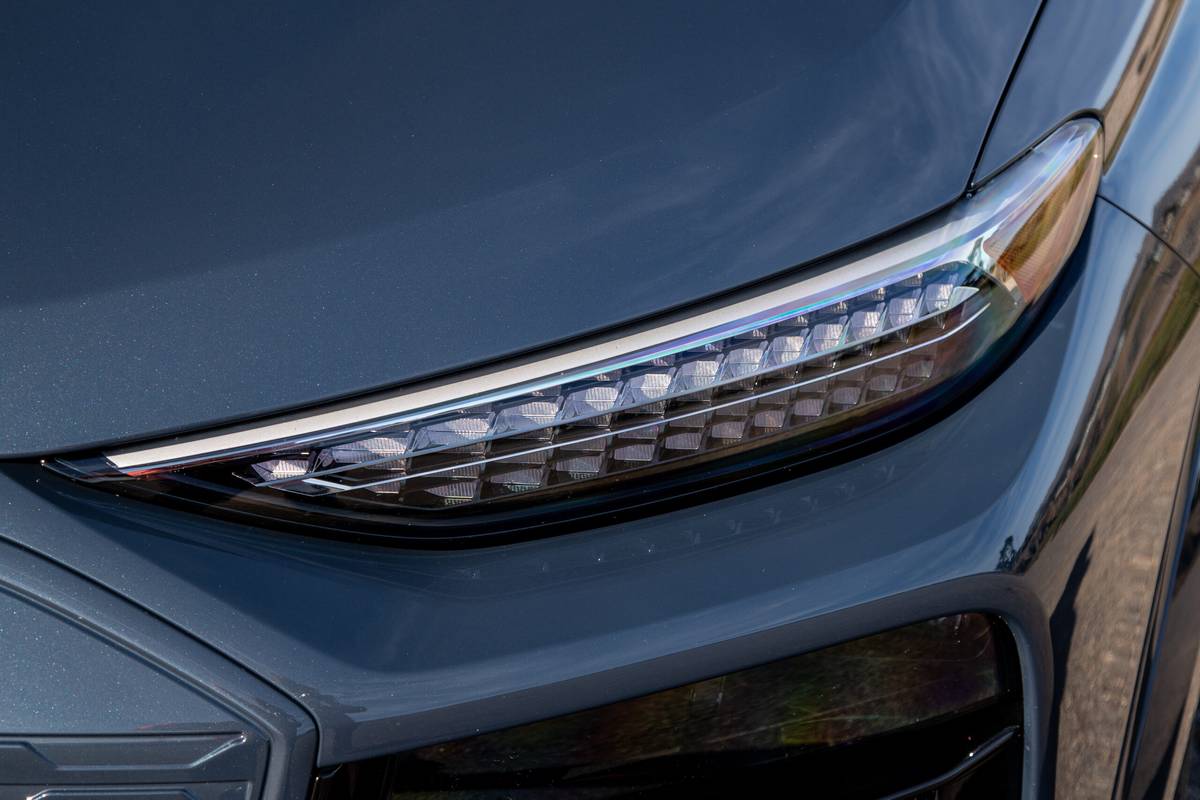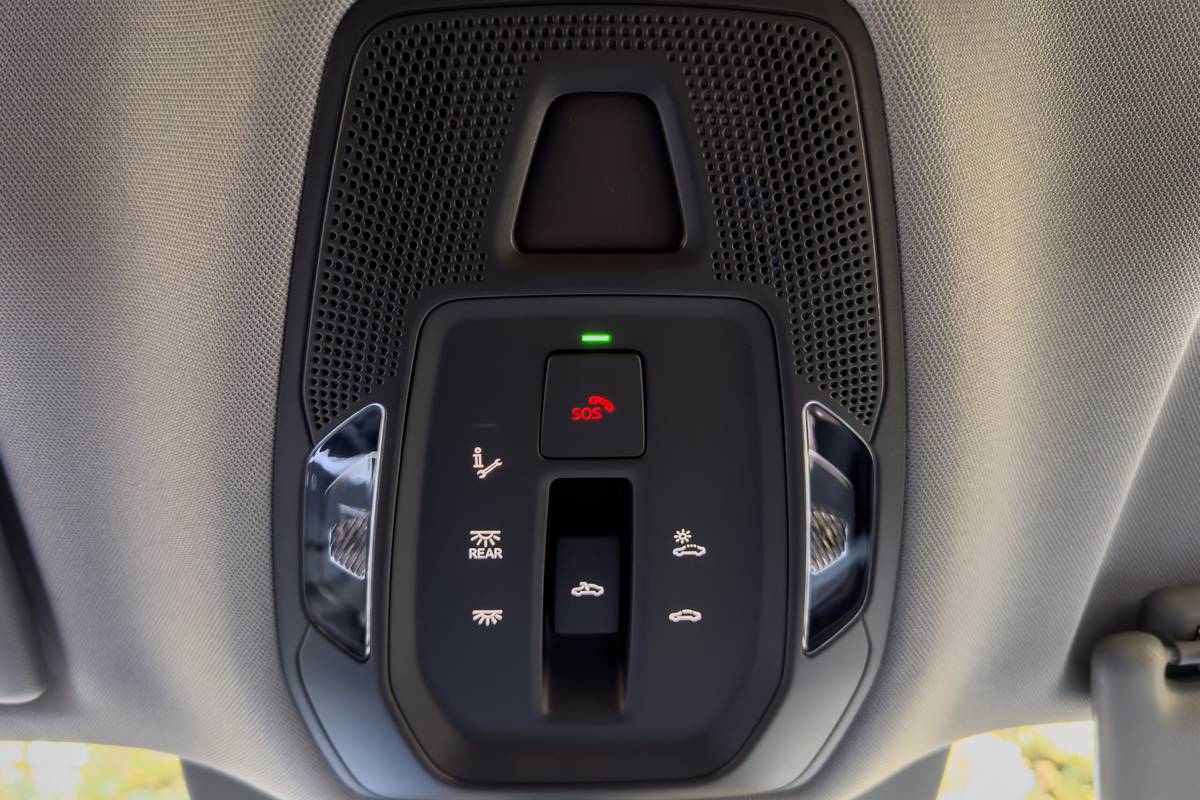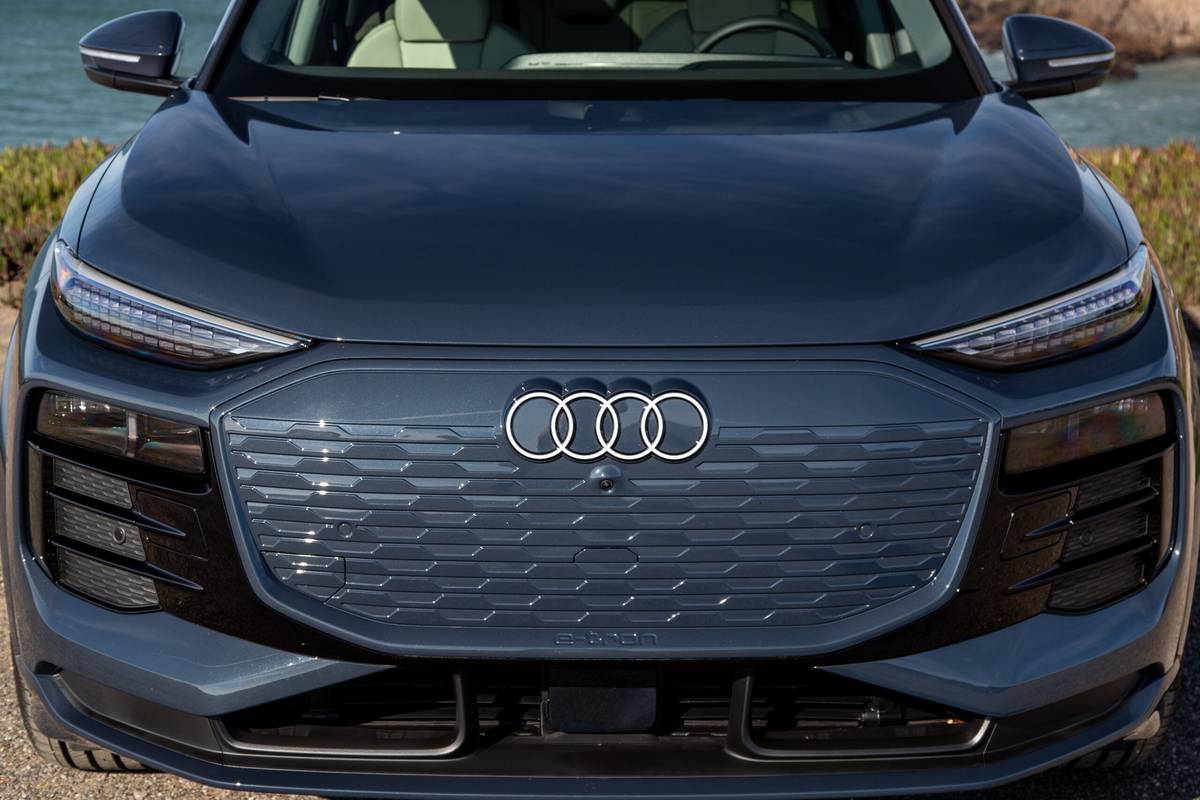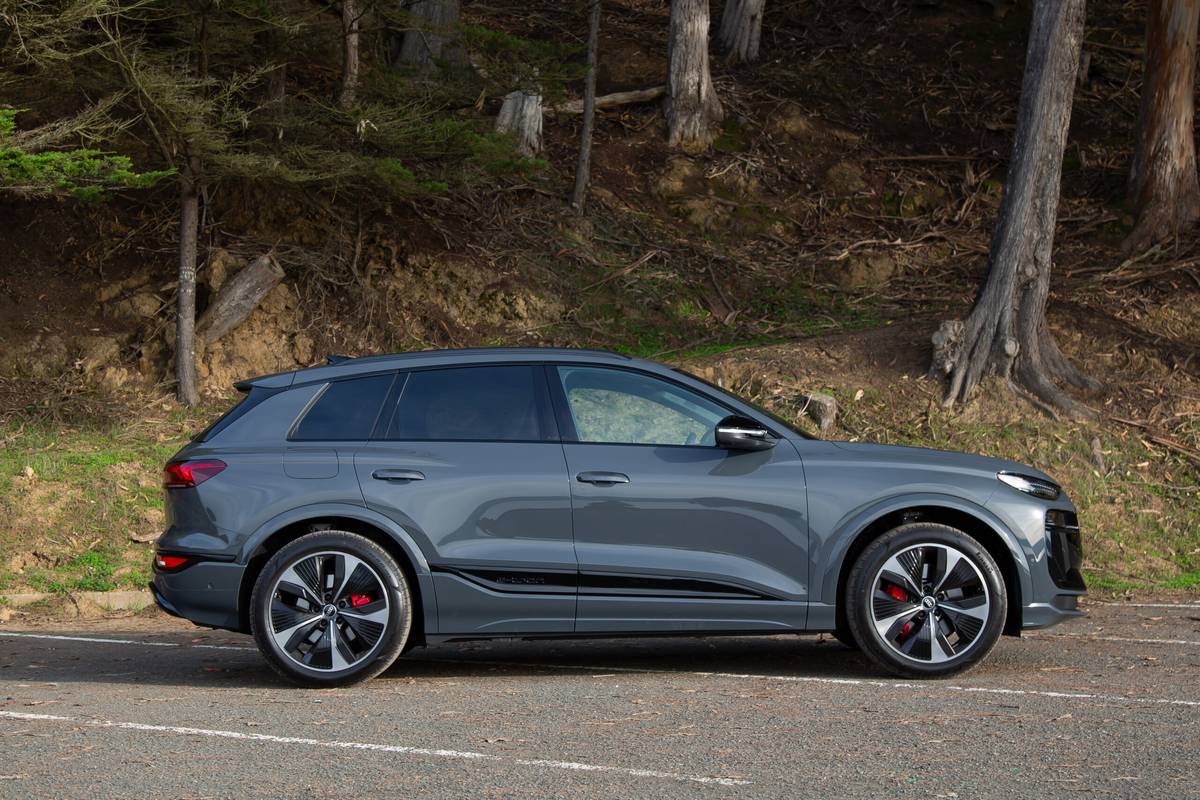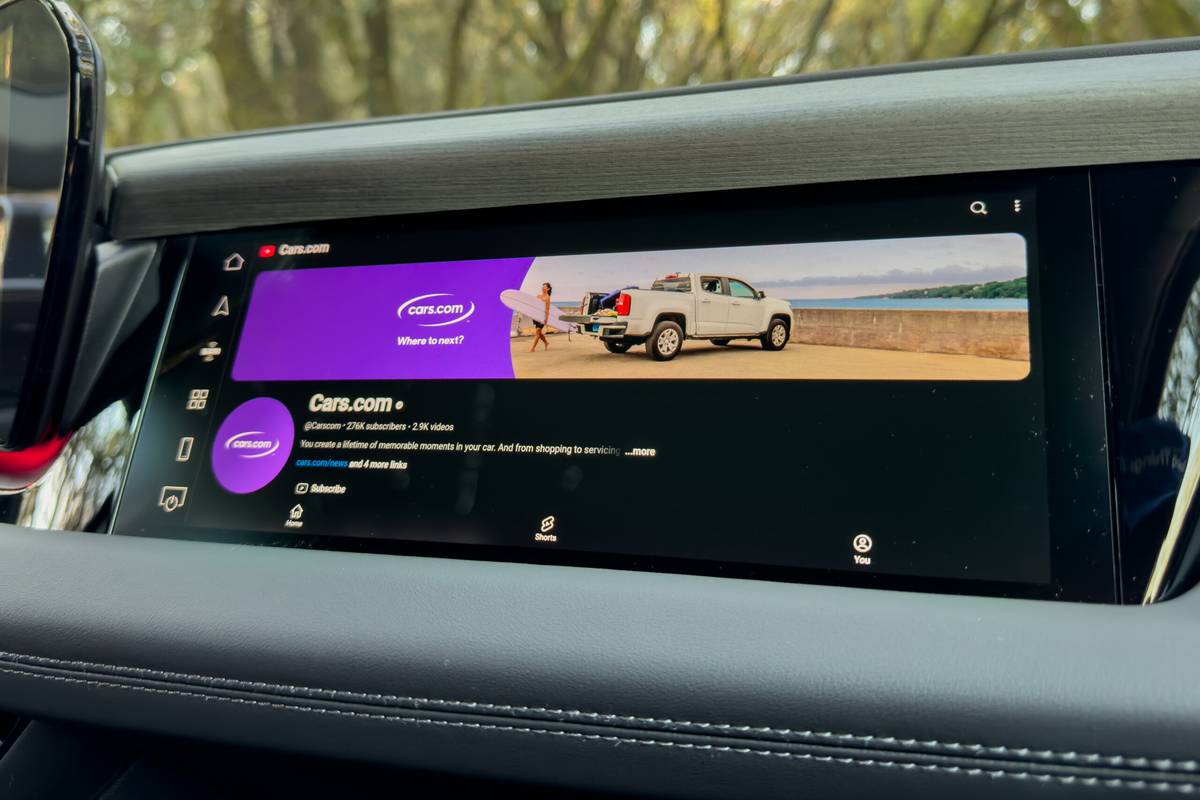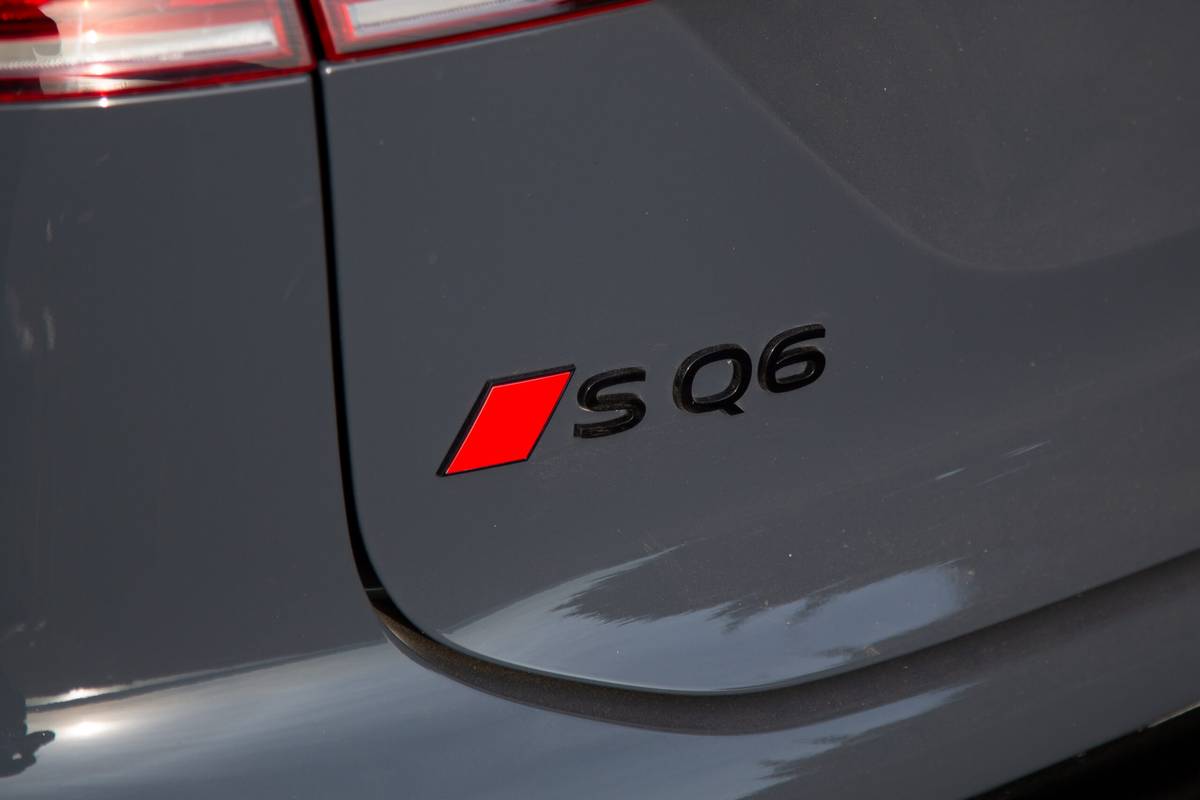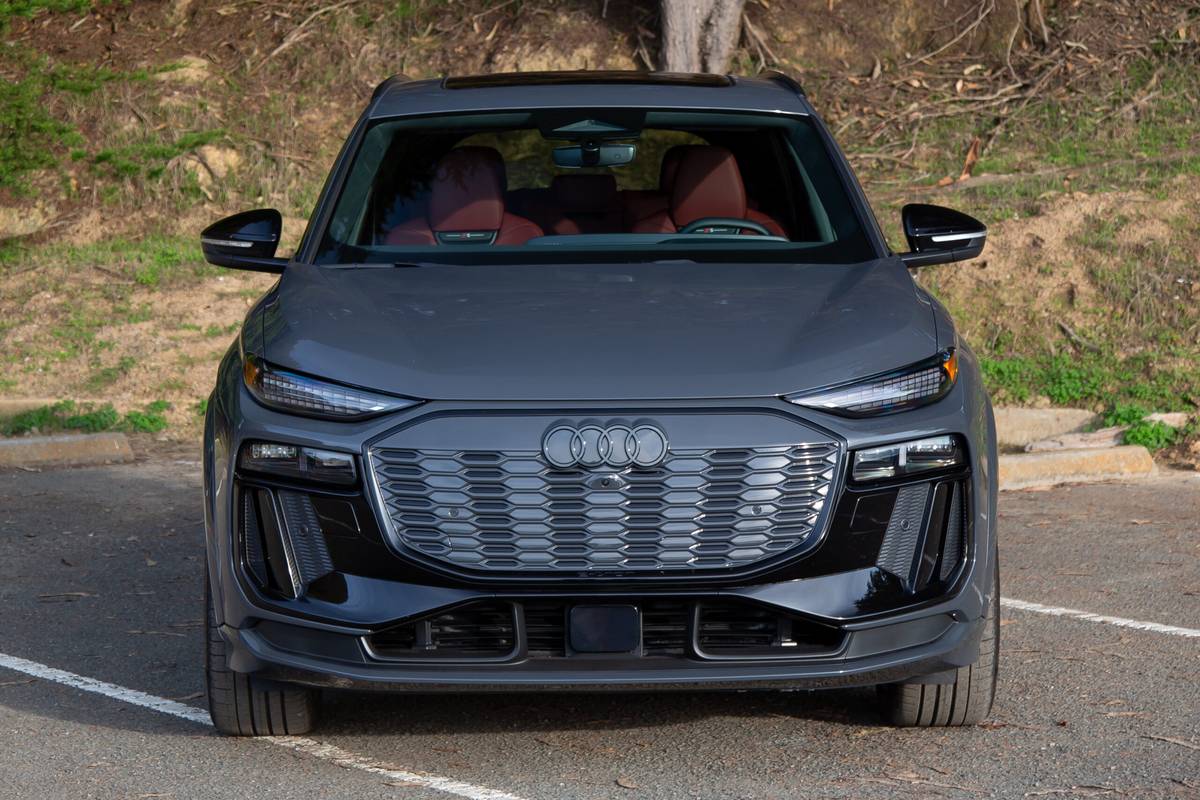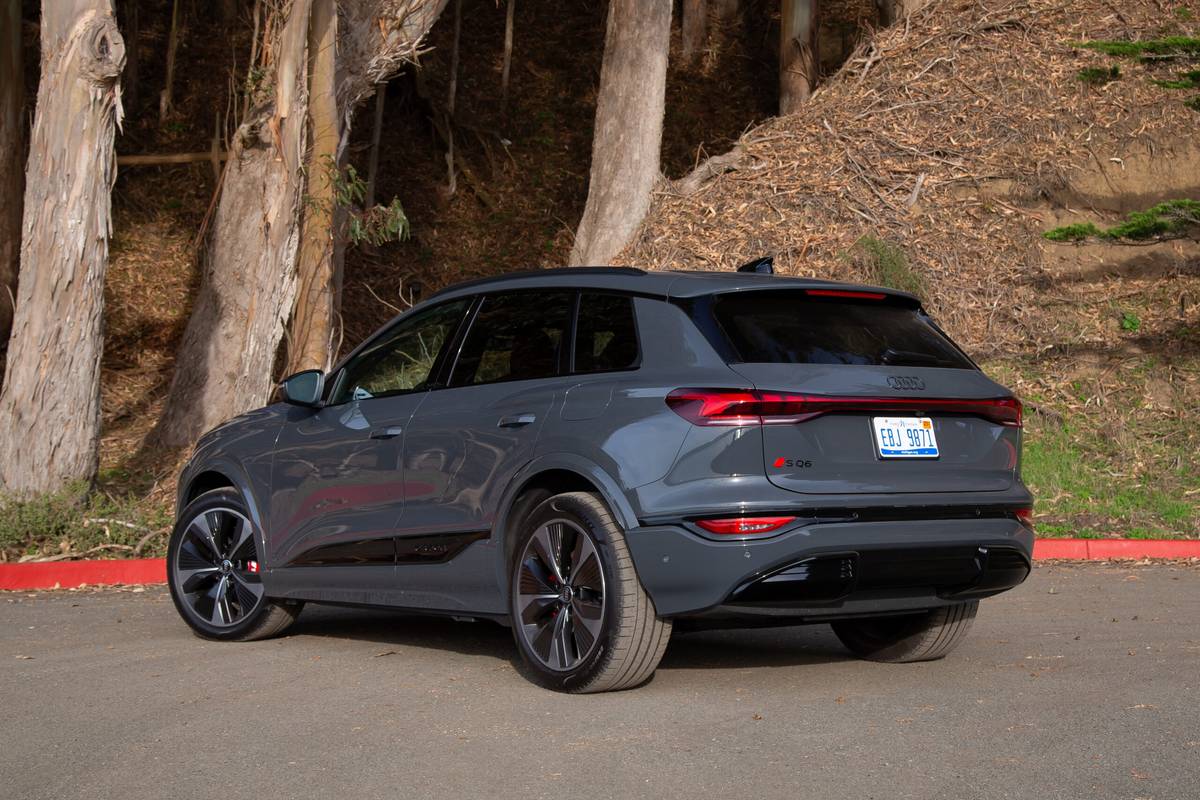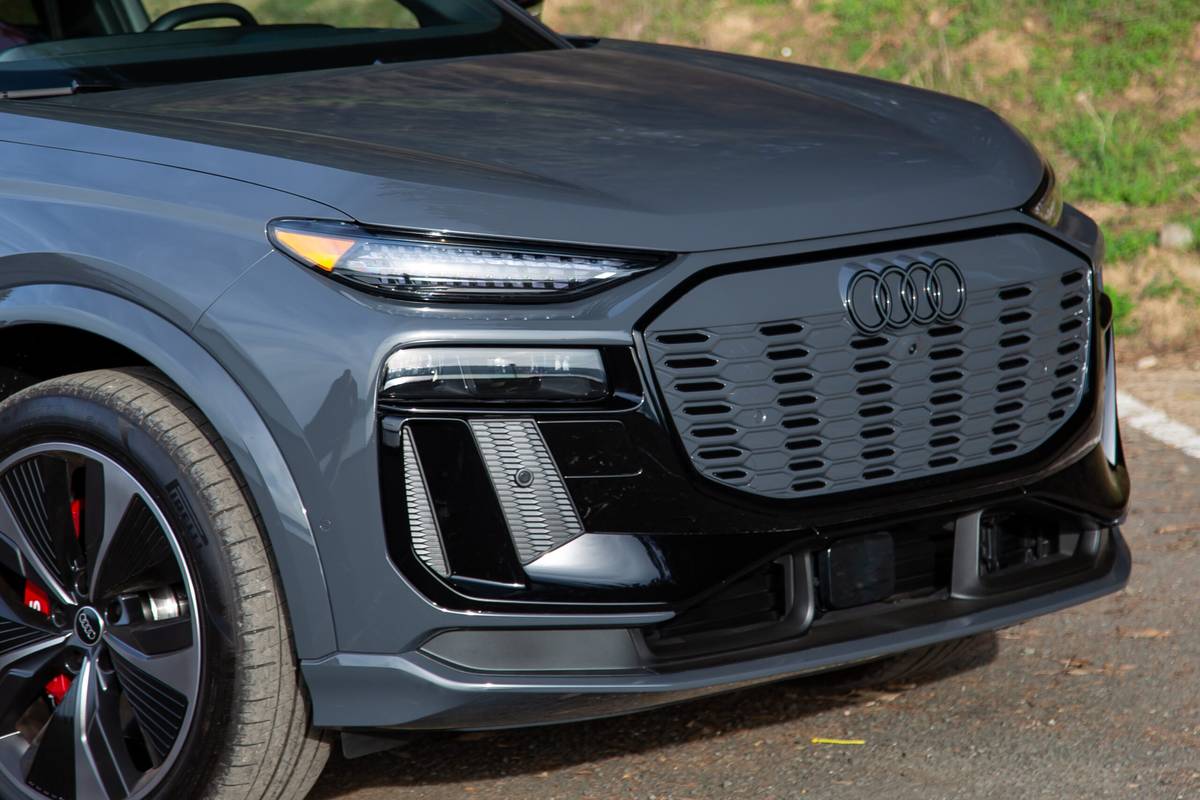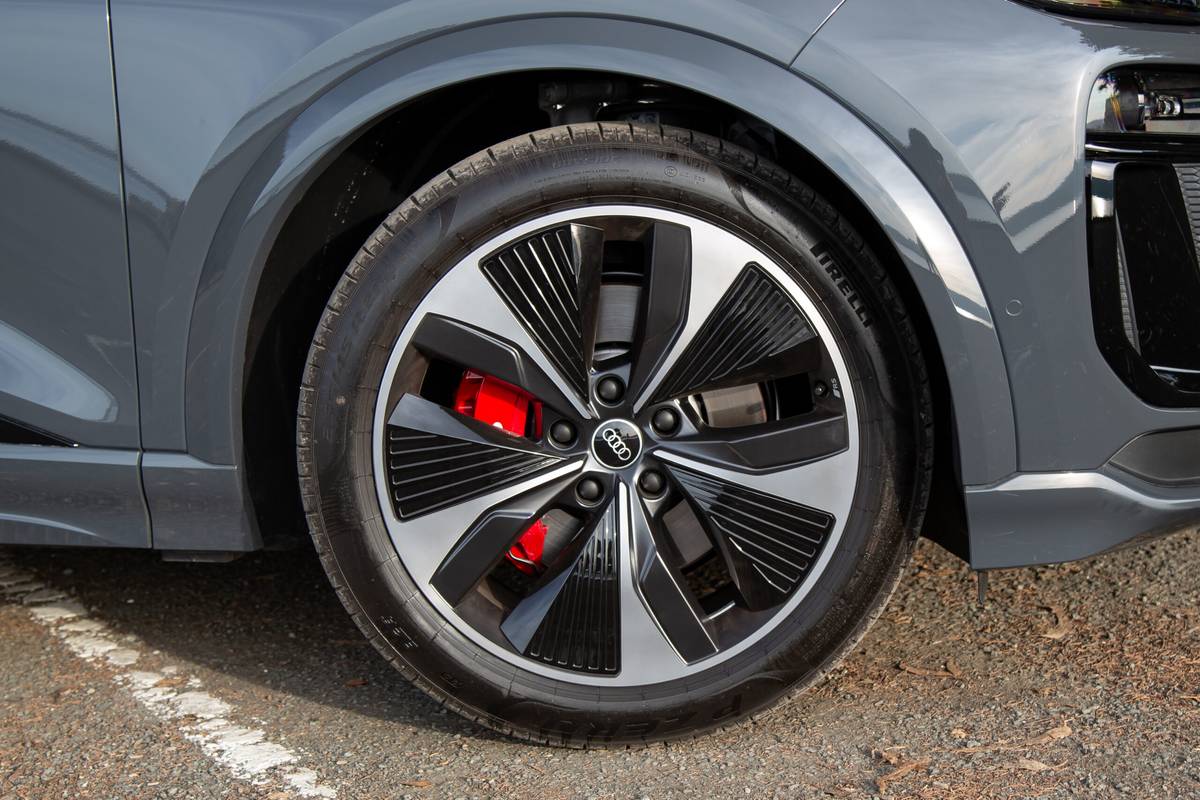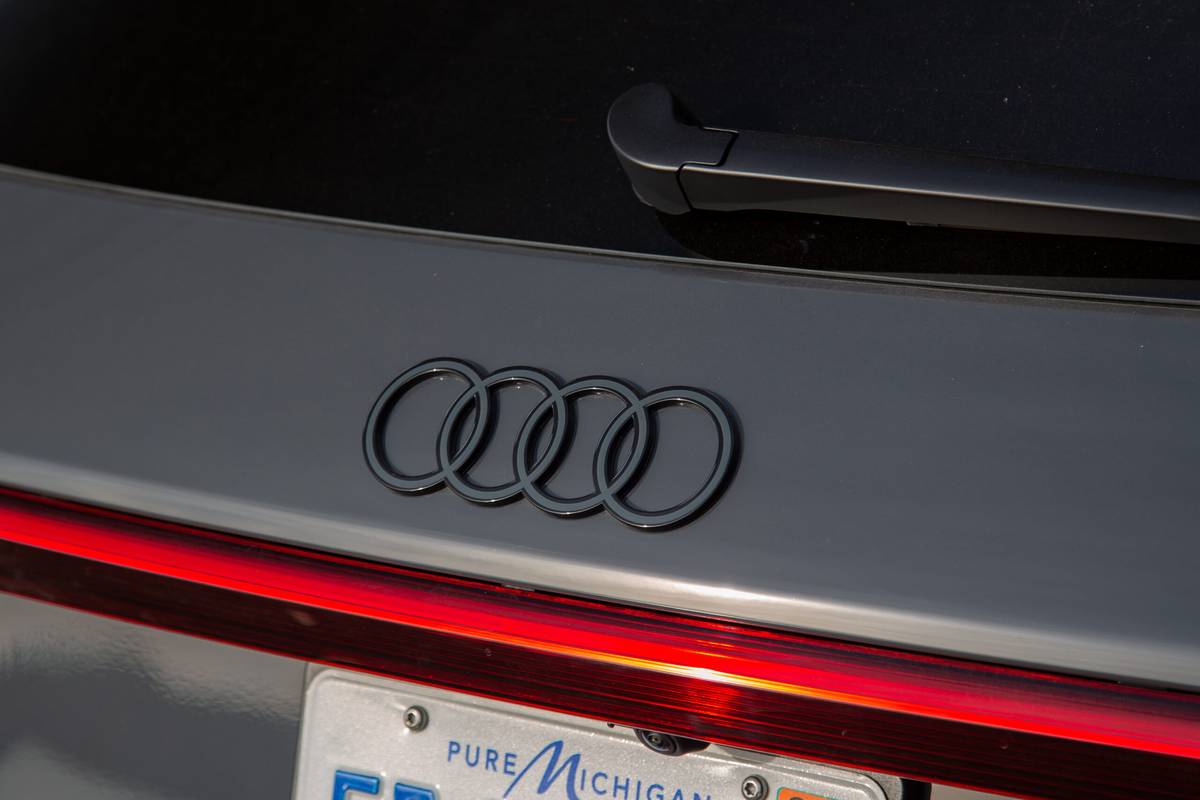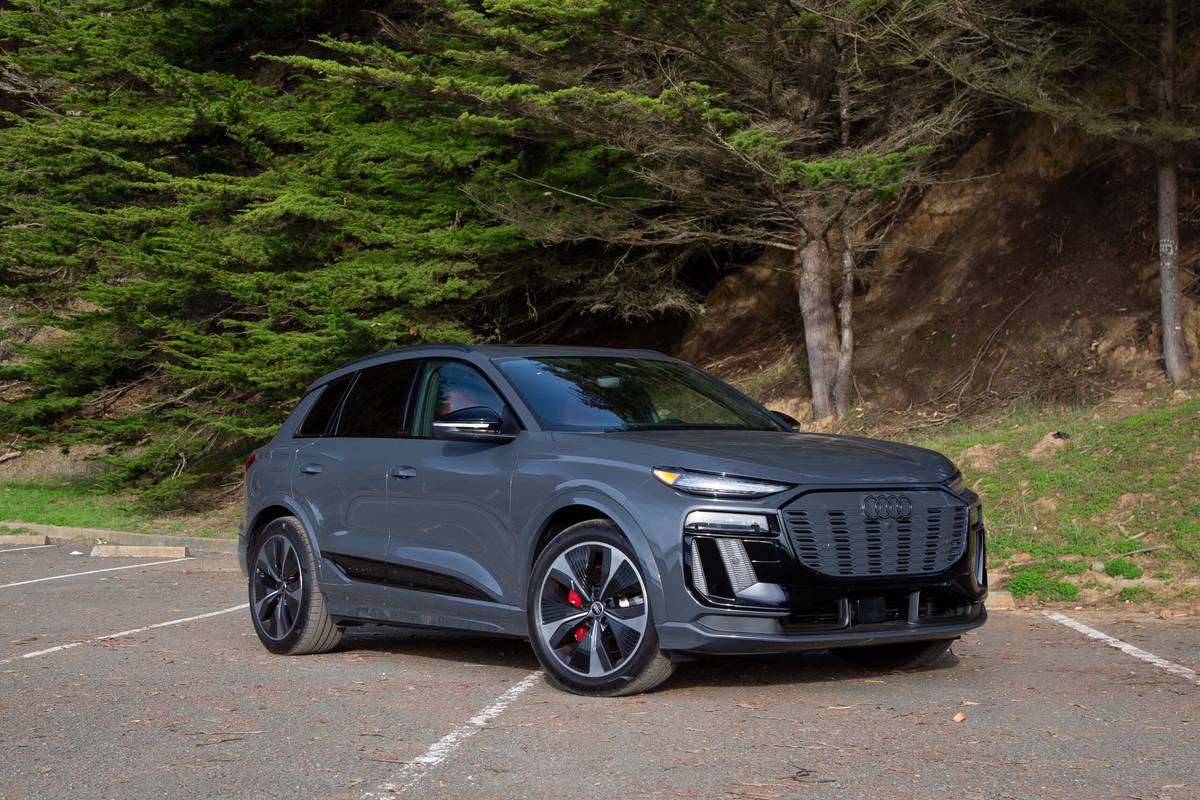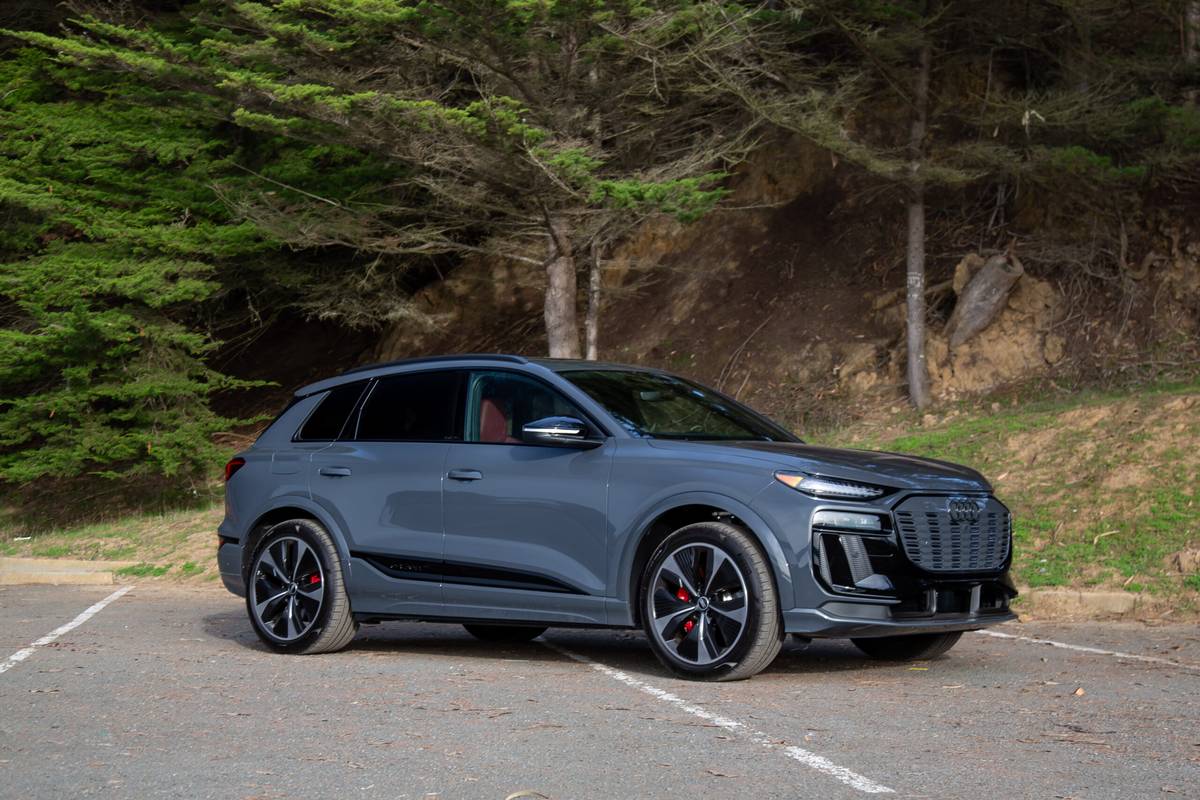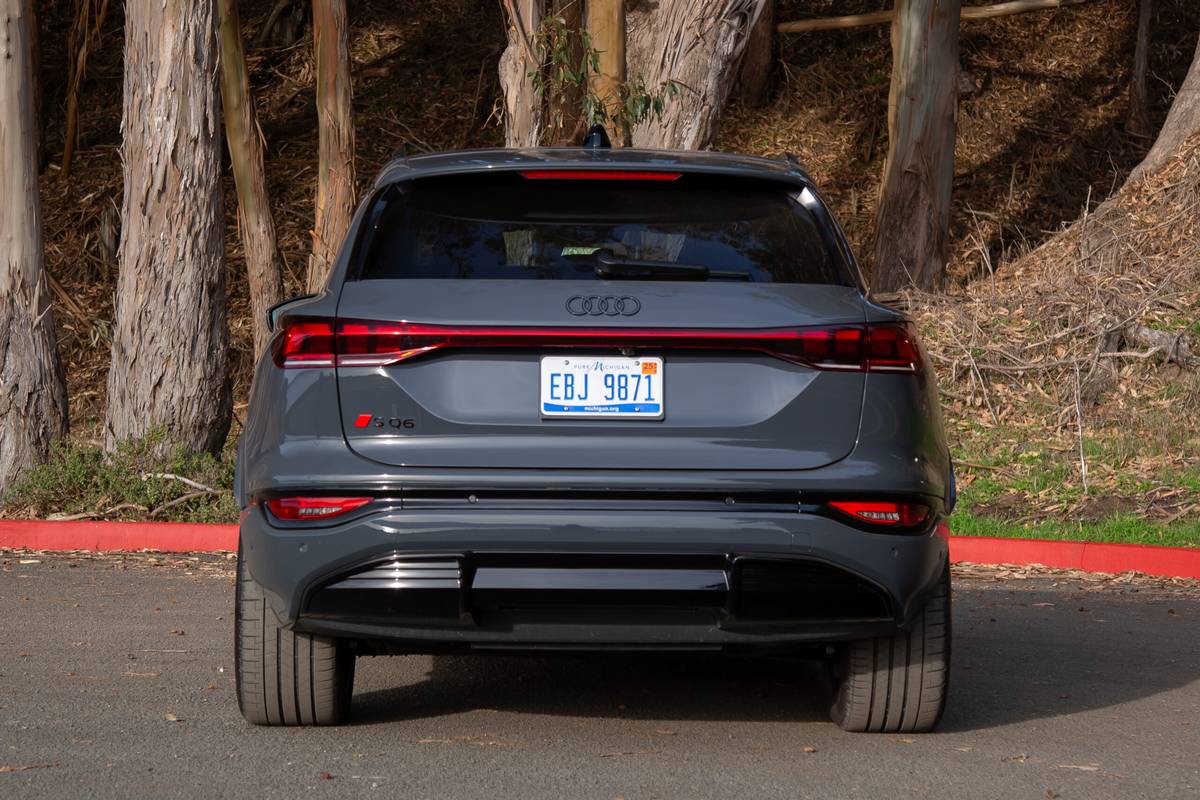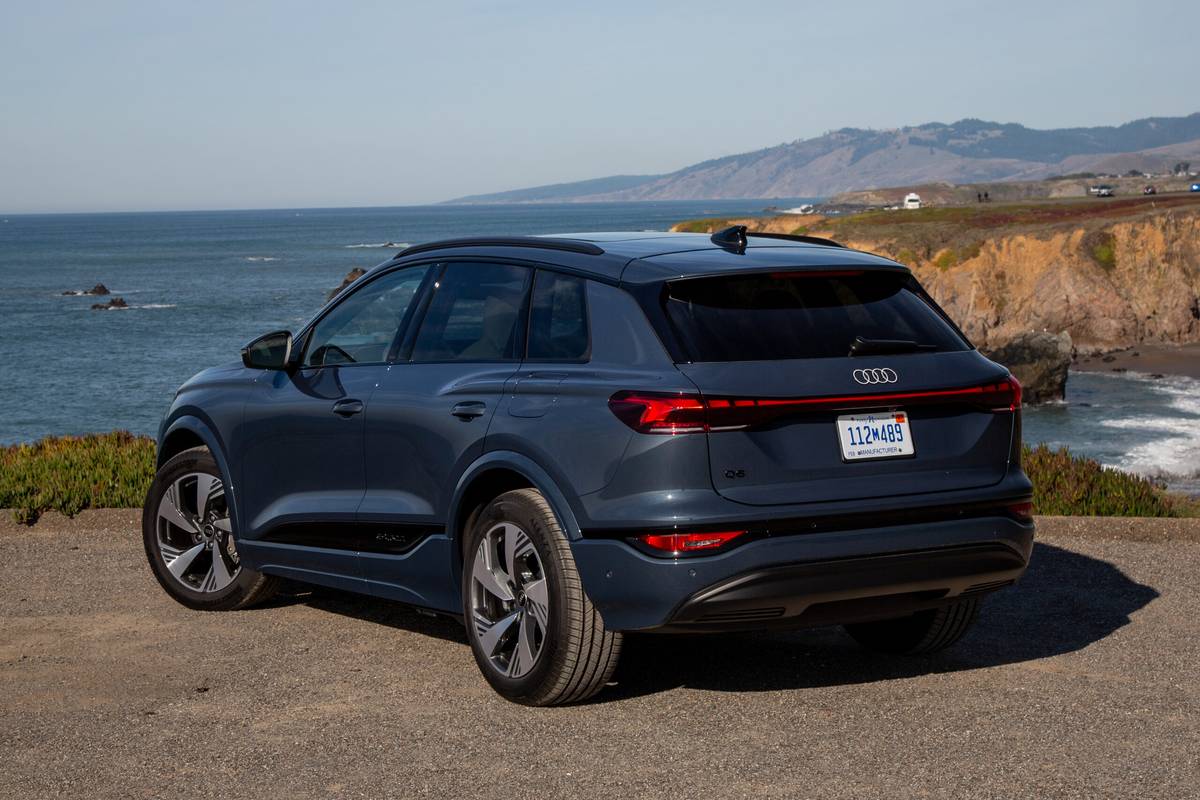
The verdict: With a combination of competitive range, power and charge speeds, as well as impressive ride quality and dynamics, the all-new 2025 Audi Q6 and SQ6 e-Tron electric vehicles have all the makings of serious crossover appeal for those who haven’t made the electric leap.
Versus the competition: For the most part, the Q6 e-Tron’s strongest competition comes from inside the family in the form of its platform mate, the Porsche Macan Electric, that’s both more expensive and offers higher performance. Elsewhere, Mercedes-EQ’s EQE SUV is more expensive, slightly longer and wears a design that’s distinctly more “EV” than the conventional Audi that might be a turn-off for some buyers.
Ah, now that is satisfying — an SUV that’d be a complete, usable vehicle regardless of whether it has batteries or a gas tank. Of course, the 2025 Audi Q6 e-Tron and hotter SQ6 e-Tron only offer the zappy stuff, but this latest offering from Ingolstadt is another exaggerated step toward the normalization of the electric car. At least in the premium-to-luxury space, this is how electrons will win — well-developed, non-gimmicky electric SUVs that give buyers an equivalent or better experience than a traditional gas-powered model.
Related: 2025 Audi Q6 e-Tron on Sale by December, Starts at $65,095
Indeed, after 150 or so miles in Audi’s latest mid-size electric SUV, I’m a fan. (Per our ethics policy, Cars.com pays for its own travel and lodging when attending manufacturer-sponsored events.) And I hope you will be, too, as you’re going to see — or rather experience — the bones of the Q6 e-Tron everywhere. This is our first crack at an Audi on the Volkswagen Group’s Premium Platform Electric architecture, the same bones you’ll find under the Porsche Macan Electric and forthcoming Audi A6 e-Tron, with many, many more derivatives to come provided Volkswagen Group’s EV plans aren’t waylaid as much as rumors suggest.
Brothers From Another Mother (Company)
Porsche and Audi might be loath to admit it, but it’s best to consider the Q6 and SQ6 e-Trons as the four-ringed reskin of the electric Macan, utilizing both the same platform and suspiciously similar dimensions. The base Macan Electric is a mite longer, just as wide and predictably lower than the Audi with a wheelbase stretch of just 0.2 inch, a surprising revelation when assessing the Q6 e-Tron in person. I’m not sure if I’m just surprised the Audi is Macan-size or if the Porsche is as large as it is, but the proportions work in both applications.
Audi’s icebox has three flavors at launch. The standard single-motor, rear-wheel-drive Q6 e-Tron is good for 302 horsepower (322 hp temporary peak with launch control) and a maximum of 321 miles of EPA-rated range. That’s not bad, but I exclusively sampled the dual-motor all-wheel-drive variants, starting with the appropriately named Q6 e-Tron Quattro. A stable 422 hp keeps things lively, with a temporary max of 456 hp if launch control is enabled. The SQ6 e-Tron bumps figures to 483 hp and 509 hp, respectively.
All configurations use the same 800-volt, 100-kilowatt-hour battery pack with 94.4 kWh of usable juice, returning 307 miles of EPA-rated range in the Q6 e-Tron Quattro and 275 miles in the SQ6 e-Tron. Beat the brakes off of it as I did, and you’ll need to plug in less frequently, rewarding those who DC fast charge the dual-motor variants with the ability to charge at up to 270 kilowatts. Audi says that’ll replenish the battery from 10% to 80% in 21 minutes.
Power (Un)corrupted
The specs are nothing shocking (har, har), but a collection of very well-rounded figures for sure. Audi reps on hand at the drive program specifically mentioned the goal was to make the dual-motor Q6 e-Tron significantly quicker than the standard gas-powered Q5 SUV (its closest internal-combustion analog). The official 0-60 mph time is 4.9 seconds, which feels just about right from where I sat if not a smidge conservative. That 422 hp has over 5,200 pounds to hustle, but on-ramp rushes and blasts through country-road straightaways shrink the Q6 e-Tron’s bulk nicely, with more than enough gumption from the dual motors for anything the typical driver could ever need it for while also keeping the speed-demon spouse reasonably entertained.
Despite the significant 61-hp delta, the difference in both standing and rolling acceleration between the Q6 e-Tron and SQ6 e-Tron was mostly marginal. It is quicker — Audi claims a 0-60 time of 4.1 seconds — but not enough that you should stretch your budget thin to make the leap. Only do so if you gain immense satisfaction from numerical superiority or live on some properly good roads, but this is less of a mark against the SQ6 as it is an endorsement of the Q6.
Platform Pleasure
It’s the rest of the duo’s footing that impresses the most, however. The new PPE platform gives quite the footing, with the available adaptive air suspension lending both a silky ride and dynamic capability that was, dare I say, kinda fun? That’s not something I have previously experienced in any non-performance electric SUV, including the smaller, different-platformed (but still electric) Audi Q4 e-Tron.
It’s no RS 6 Avant, but drivers who appreciate a sorted chassis will find a friend here with impressively little body roll and beaucoup grip. I realize this is a rather silly assessment of a vehicle primarily aimed at school drop-off lanes and office parking lots, but our drive route that carried us north of California’s Napa Valley wound through some of the country’s finest roads that often had more squiggle than straights, so I’ve got bends on the brain. Other areas were pockmarked with potholes and crags, both terrain gobbled up and handily managed by both the Q6 and SQ6.
Steering is fairly granular and feelsome for a nearly 2.5-ton electric SUV, with little variance between the S and the standard Q. Brake balance is well done, as is accelerator tuning. Just about the only thing in the driving experience I found lacking was the organization and tuning of the regenerative braking modes. Three levels of regen are available via paddles on the steering wheel, but they immediately deactivate the instant you engage either the brake or accelerator pedal, with the system then defaulting back to the automatic regenerative mode.
Regen Reluctance
When active, the auto regen function uses a combination of camera and, when applicable, navigation to increase motor resistance when behind a car or approaching a navigational turn. That’s fine, but sometimes I want regen on demand without giving up the automatic mode, especially as I’m easing up to a stoplight. When in the manually selected regen setting, why not give a five- or 10-second grace period before switching back to automatic mode? Regardless, the “B” mode on the drive selector is the car’s permanent-state one-pedal regen mode that increases resistance to its max level. I used this when I wanted regen braking and just coasted in auto mode when I didn’t.
More From Cars.com:
- 2025 Audi Q6 and SQ6 e-Tron Detailed, Up to 307 Miles of Range
- 2025 Audi Q6, SQ6 Sportback e-Tron: Fastback SUV Fans, Rejoice
- Aerodynamic 2025 Audi A6, S6 e-Trons Are Here to Slip Into Your Garage
- 2024 Audi Q4 e-Tron Review: Not Too Hot, Not Too Cold
- Shop for a 2025 Audi Q6 e-Tron Near You
Cabin Cons
Those already familiar with the Q4 e-Tron and even the E-Tron GT sedan will be right at home in the Q6 e-Tron’s cockpit, for better or for worse. If specified entirely in black, it’s a cold, austere environment that offers Audi’s traditional no-nonsense aesthetic that appeals to those without whimsy and techwear obsessives. The materials are acceptable for the price and positioning, but not remarkable; I’m not sure if it’s the expense outlay of developing an EV or the endless battle against weight, but the current generation of premium and luxury EVs — from everyone — feel less substantial and a bit more plasticky than their gas counterparts.
In the Q6 and SQ6, it was the extensive use of gloss-black plastic and touch-sensitive controls that slightly detracted from the luxury ‘tude. That’s mostly where my complaints end, however, as said panels were simple to operate and reactive, and the mere inclusion of a physical volume knob is well worth praise in this brave new world we’re in.
Digital Candy
The Q6 e-Trons’ so-called Digital Stage is the centerpiece here, comprised of an 11.9-inch configurable driver display and a 14.5-inch center touchscreen for infotainment and vehicle functions. Your front passenger has zero excuse to be bored with an optional 10.9-inch screen of their own capable of video streaming through various apps along with all of the other requisite infotainment functions. And if you’re worried about driver distraction while your kiddo watches their favorite YouTuber on Audi’s native app, the passenger screen automatically engages Active Privacy Mode that makes the screen inscrutable from the driver’s seat.
The driver has some digital candy of their own with an optional head-up display that incorporates augmented reality functions; navigational indicators are often 3D visuals that come at the driver as you approach a turn. The only bit of surprising tech illiteracy was the alarmingly low-fidelity backup camera.
Suspected Success
This has all the trappings of a fan favorite. If you’re a loyal Audi customer who has been holding out for an electric SUV with stronger range, performance and packaging than what’s been offered in the past, this is your cue to trade up — ditto if your old first-gen 2019-and-on Audi E-Tron is feeling a little long in the grille.
I find the Q6 and SQ6 more appealing than a fair number of other electric luxury SUVs thanks to their impressive mix of refinement and baked-in confidence, and I’m fairly convinced Audi will see strong conversion sales figures from buyers sliding out of their internal-combustion cars. Either flavor is delish, but I’ll have mine with a double scoop of motor, hold the S.
Related Video:
We cannot generate a video preview.
Cars.com’s Editorial department is your source for automotive news and reviews. In line with Cars.com’s long-standing ethics policy, editors and reviewers don’t accept gifts or free trips from automakers. The Editorial department is independent of Cars.com’s advertising, sales and sponsored content departments.














